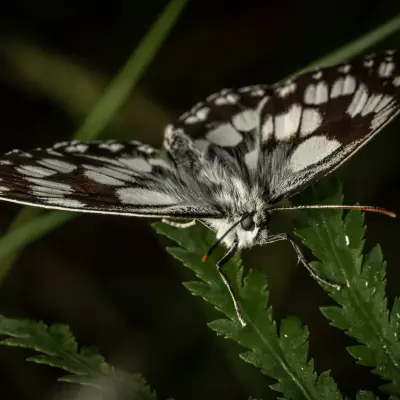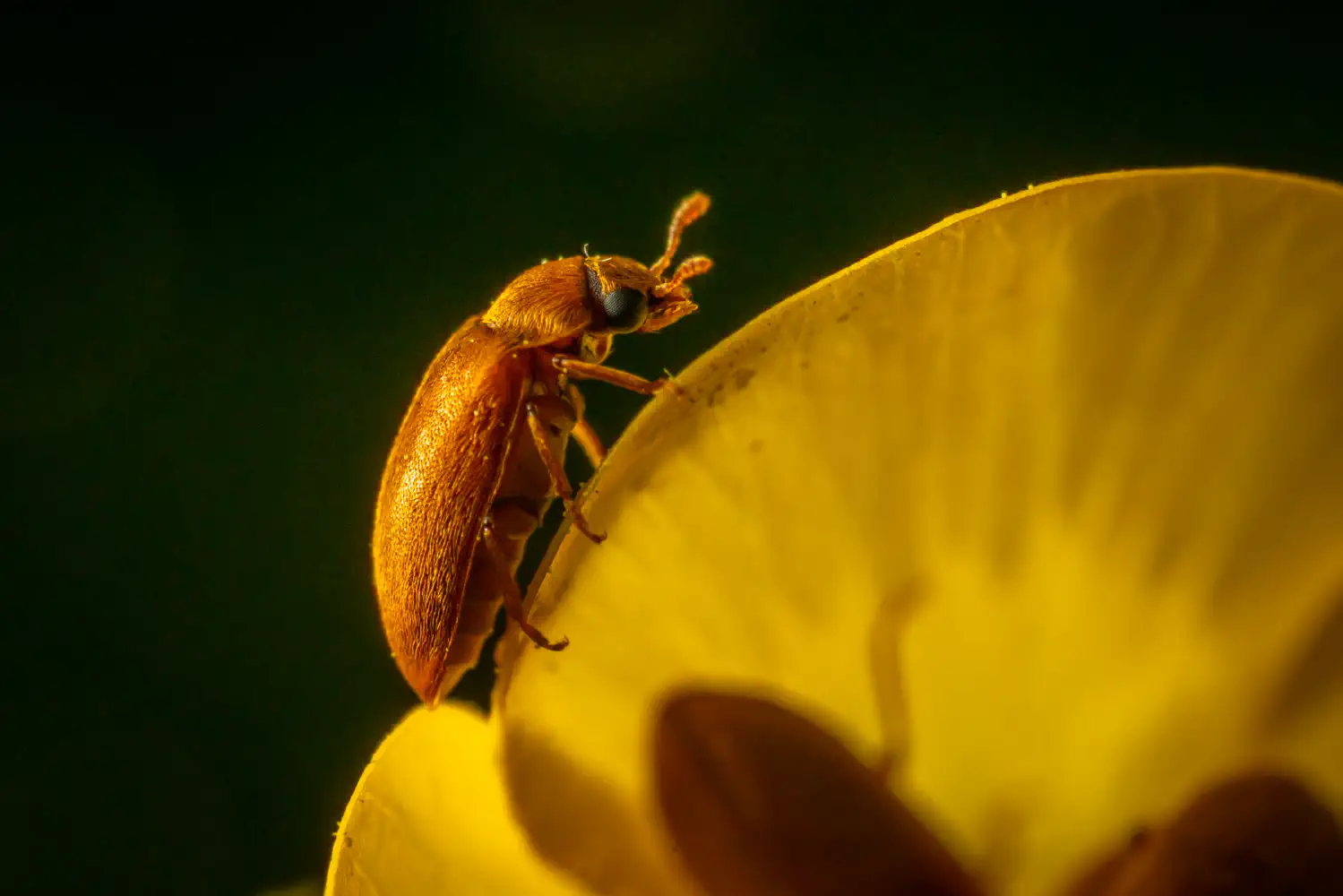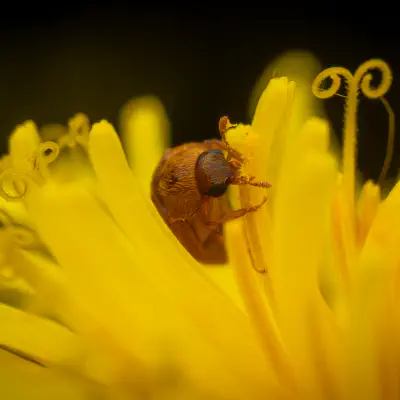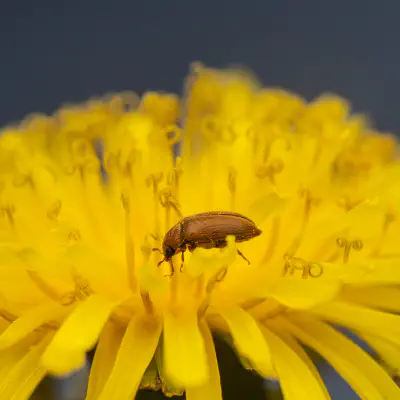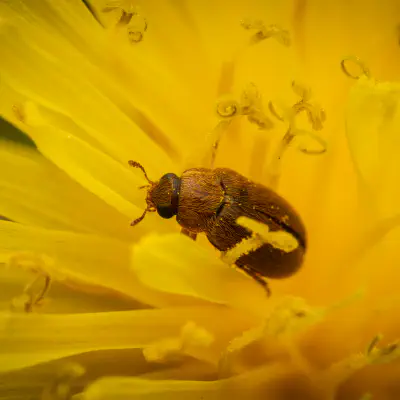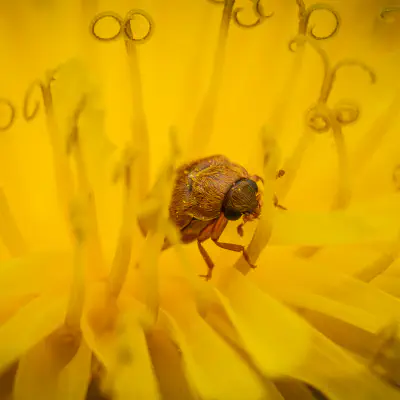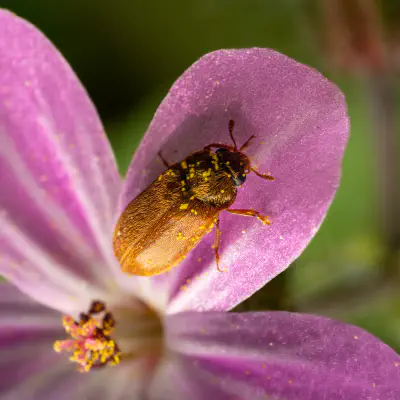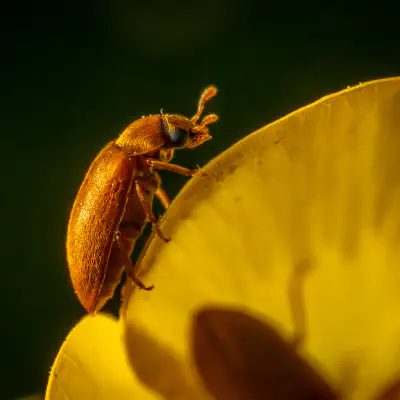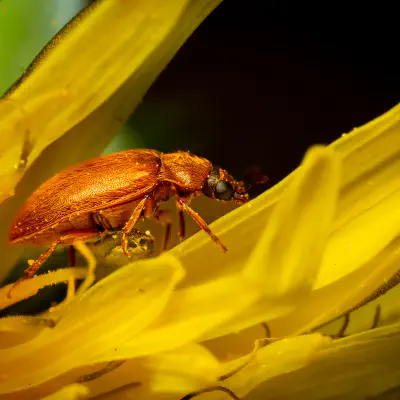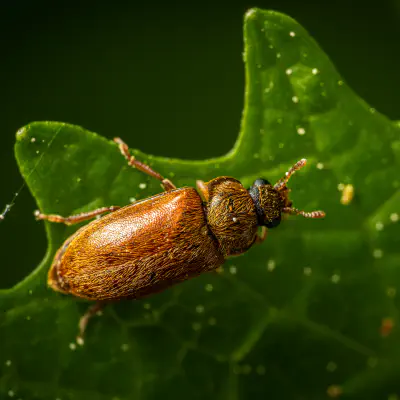Byturus ochraceus Lat. “Byturus ochraceus“
Byturus ochraceus is a species of beetle in the fruitworm family Byturidae.
Description
It is morphologically very similar to other members of the genus Byturus. All species of this genus are unlikely to be confused with any other family. Byturus ochraceus measures 4.0–4.6 mm in length, are coloured yellow-brown with yellow hairs across the body. The pronotum is unevenly curved to the front so a front angle is apparent. The long diameter of the eyes is clearly greater than half the width of the frons. The underside is coloured dark brown to black. Some individuals change colour to grey-brown by June.
Habitat and lifecycle
Byturus ochraceus adults are active from May until July. They are associated with a large range of host plants including: Taraxacum officinale, Salix, Caltha palustris, Potentilla anserina, Anthriscus sylvestris, Geum urbanum, Geranium robertianum, Alliaria officinale, Hieracium praealtum, Silene dioica, Stellaria nemorum, Lactuca muralis, and Ranunculus repens.
References
Data related to Byturus ochraceus at Wikispecies
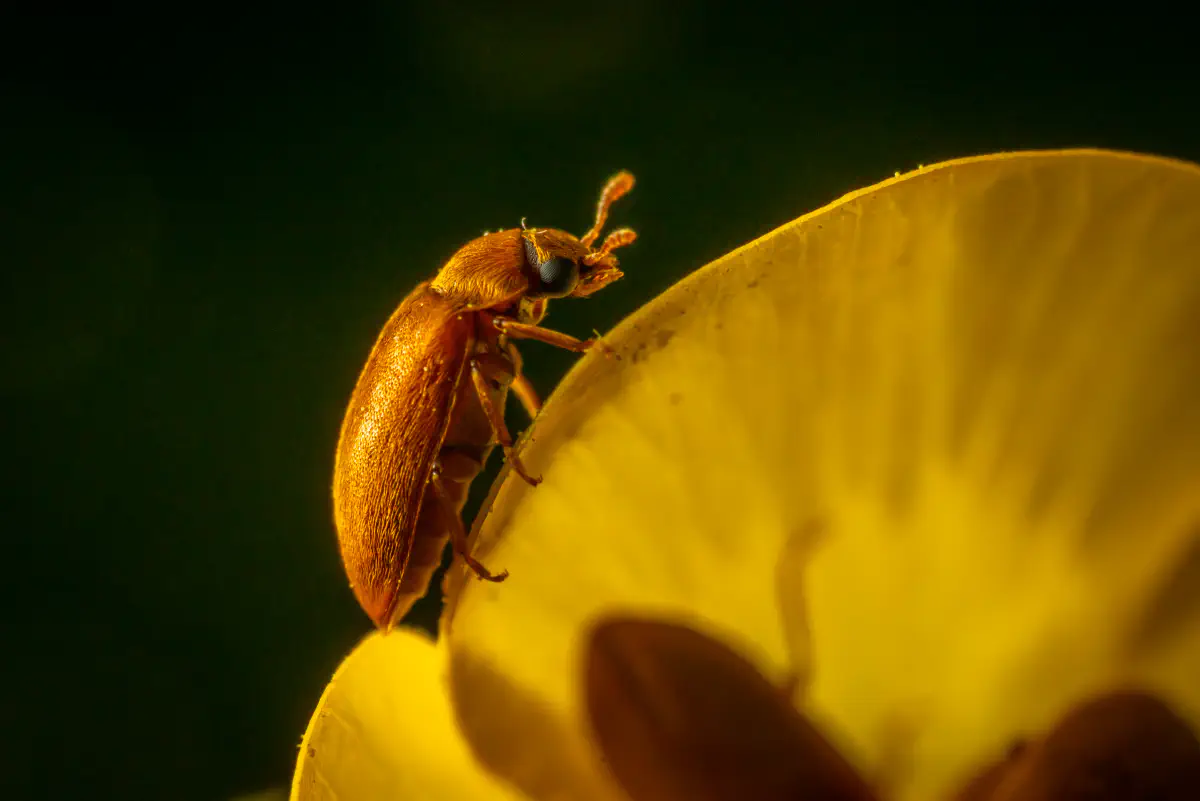
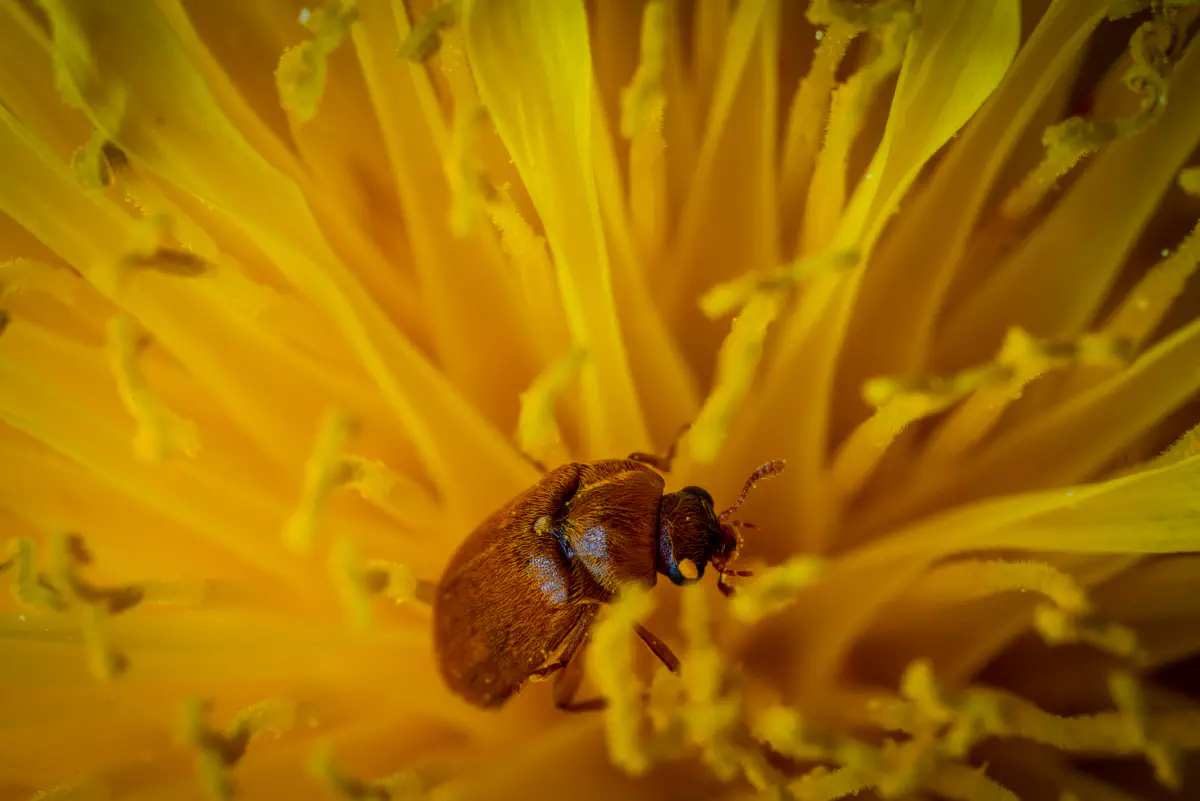
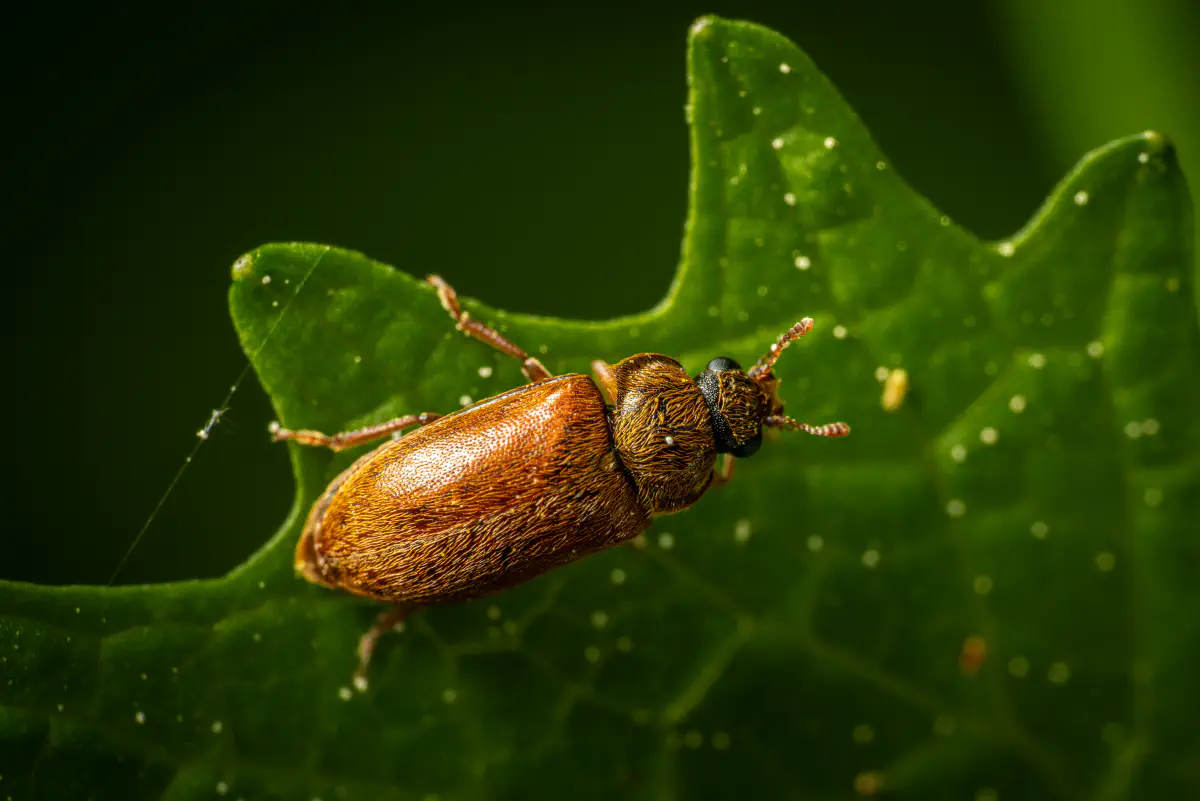

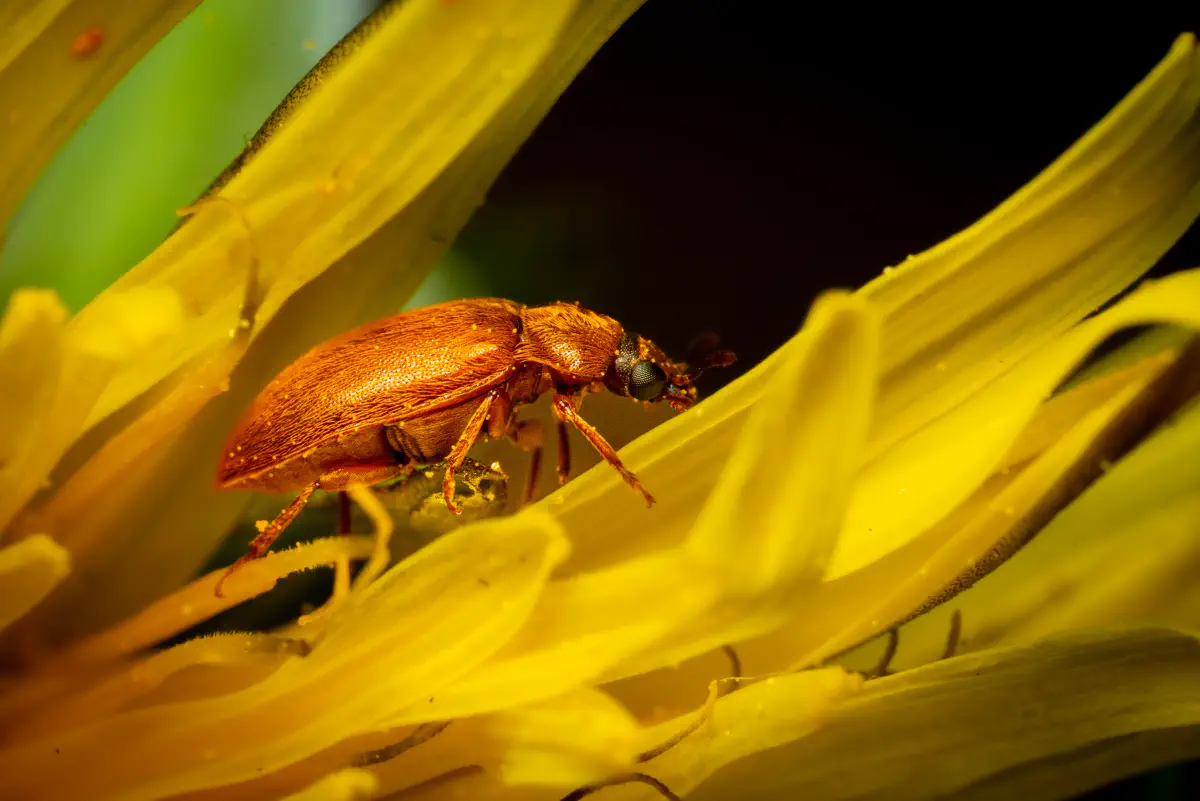
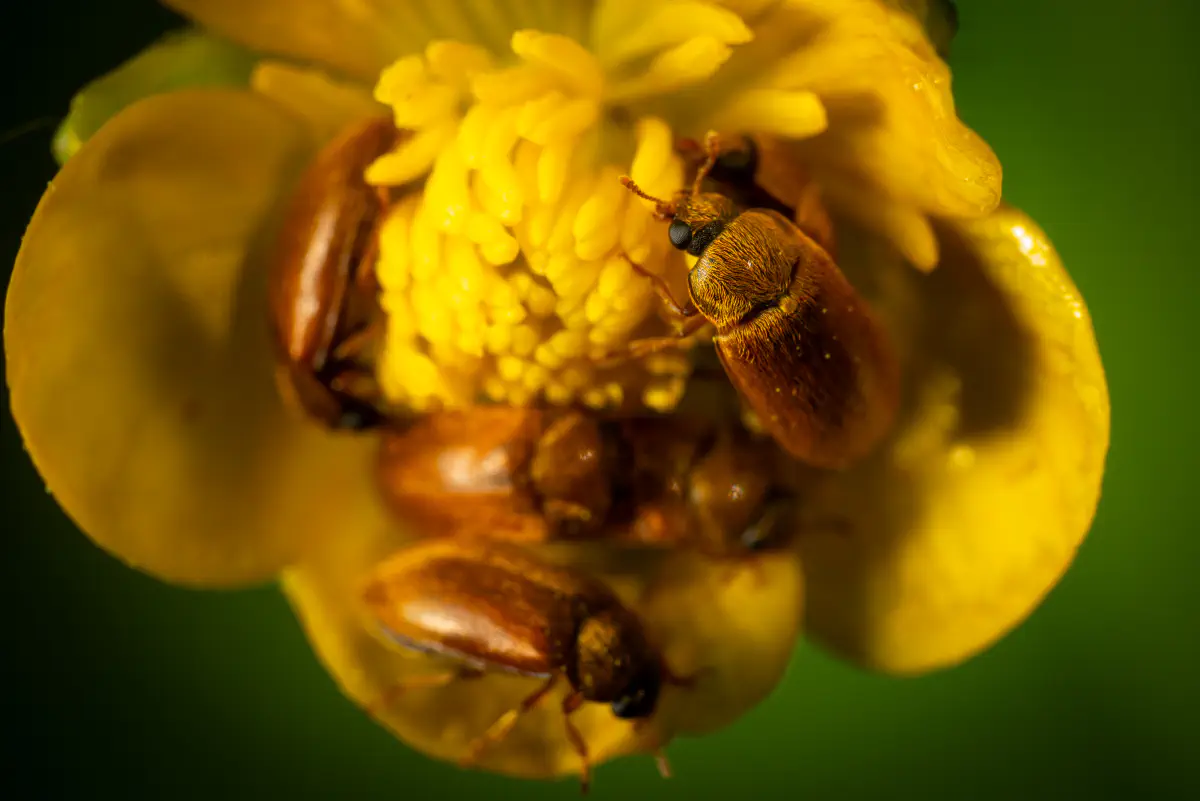


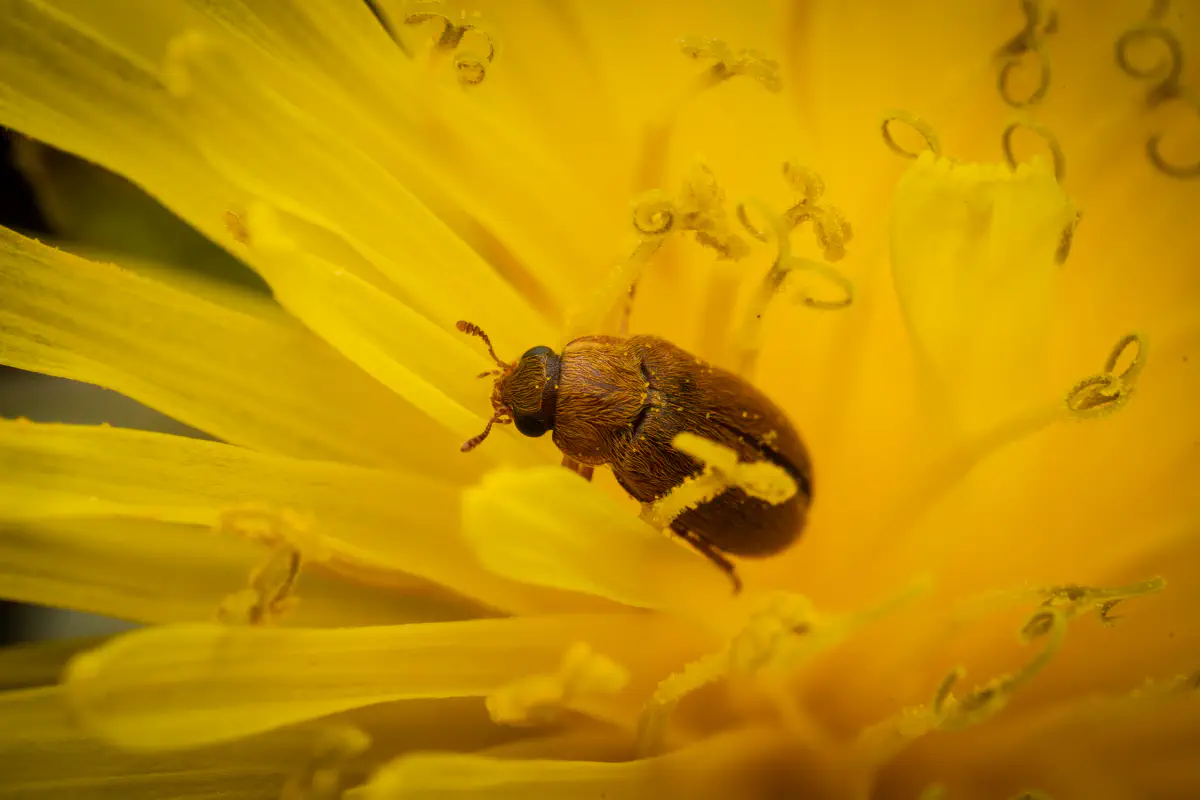
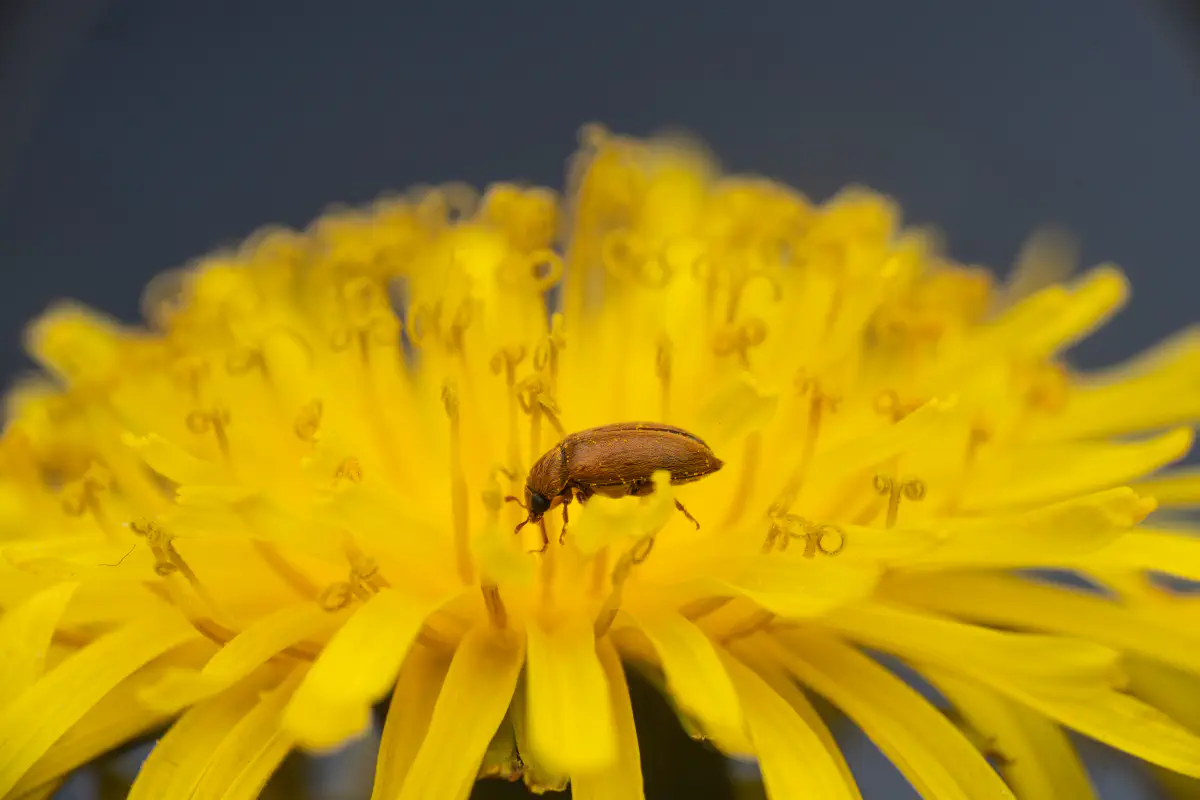

Ancestry Graph
Further Information
„Byturus ochraceus“ on wikipedia.org
„Byturus ochraceus“ on iNaturalist.org
Copyright

This article uses material from the Wikipedia article Byturus ochraceus the free encyclopedia Wikipedia which is released under Creative Commons Attribution-ShareAlike 4.0 International License). On Wikipedia a list of authors is available.
This is not intended to be a dry lexicon. Personal stories and sensitive articles form the framework for our pictures: „We received a letter from a reader“
An angry butterfly has written to us. It's about a lack of respect for small beings and the failure to preserve nature and our planet.
